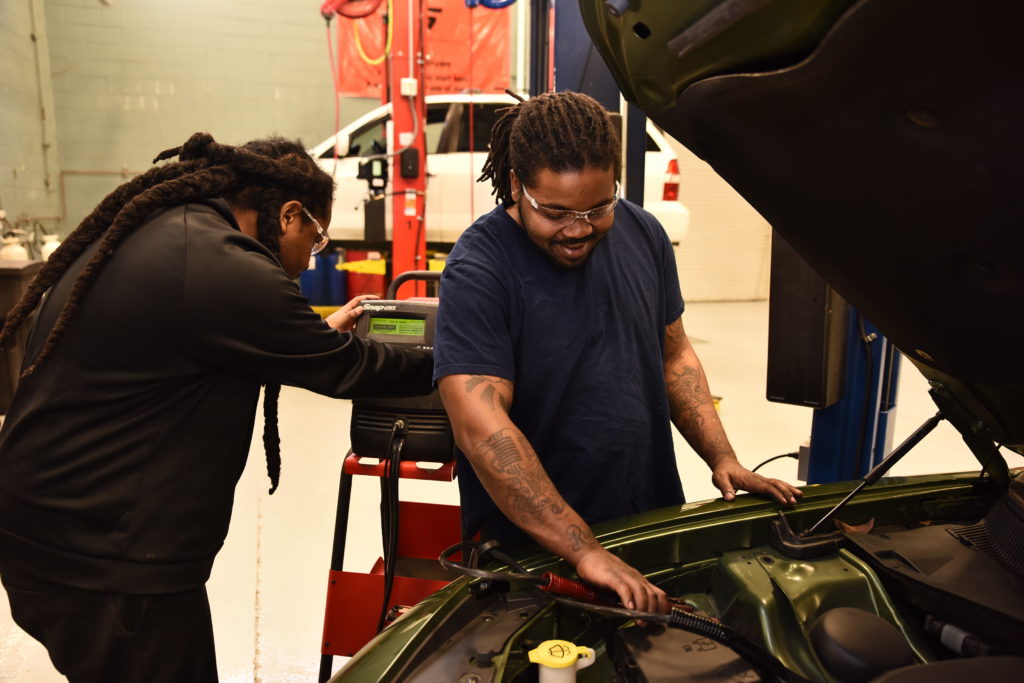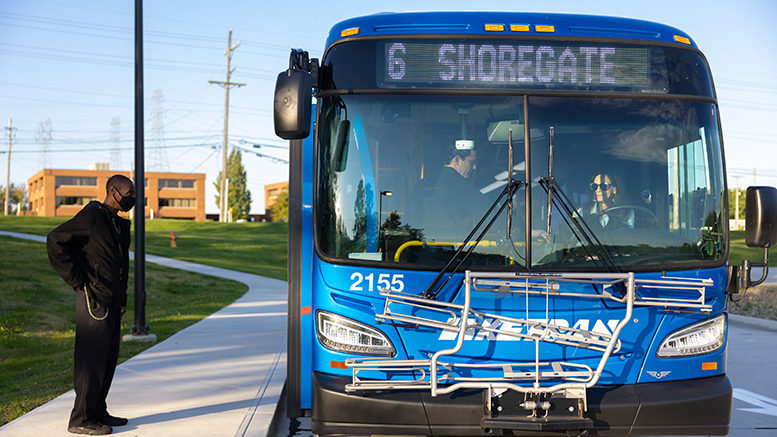A student’s inability to get to campus can be enough to derail college plans. A growing number of colleges are finding solutions to overcome that barrier.
Right around the time Chattanooga State Community College in Tennessee was reopening classes last summer after months of remote learning, the area bus system reinstated fares that had been waived earlier in the pandemic.
College leaders regarded the timing as unfortunate — and also as an opportunity. A decade ago, ChattState had offered bus passes to students as part of their fee package. The benefit ceased in 2012 because of cost concerns. But now the college had federal pandemic relief funds, and a clear need. In surveys, one in five Chattanooga State students have reported that they struggle with transportation.
“We put it on the table again,” said Amanda Bennett, interim vice president of student affairs. “We know our students are having transportation issues. Wouldn’t it be great if we could offer the rideshare program from years ago?”
And so, for 12 months, any student or employee with a ChattState ID can ride Chattanooga Area Regional Transportation Authority (CARTA) buses for free. The administration will use the year to study what the benefit means to students and the school.
In need of a ride
With its trial run, Chattanooga State is joining dozens of community colleges that are looking for ways to help students get to campus. Some are re-upping bus passes and other programs that were set aside during the pandemic. Others are initiating new partnerships with regional transit systems. For students who can’t get to bus lines, schools are offering help with car repairs and fuel expenses.
“When students are in high school, all of these services are part of their education — transportation and free lunch, things like that,” said Nancy Patterson, vice president of college advancement at Chattanooga State. “When they enroll in college, all of a sudden they’re having to provide it for themselves. For our low-income students, that’s a significant barrier.”
The College Board estimates that community college students spend an average of $1,840 a year on transportation.
Because most community college students commute to classes daily, they spend more on transportation than their peers at four-year colleges. And carpooling options often aren’t feasible for students juggling classes, off-campus jobs and family responsibilities.
The American Association of Community Colleges last month joined a host of student-centered groups in signing a letter to members of Congress expressing support for the Promoting Advancement for Transit Help to College Act, known as PATH. The bipartisan proposal would create grants that colleges and public transit providers could use to increase student transportation options.
Among other benefits, passage of the bill would “help low-income college students pay for the cost of public transportation, which we know can be a barrier to college persistence and completion,” the letter states.
Rural, urban services
In Chattanooga, Willie Buckner lives several miles from the ChattState campus. “Too far to walk or bike,” he said.
Buckner doesn’t have a car and he doesn’t have easy access to a bus line. But the college helped him sign up for CARTA’s Care-A-Van service. Every weekday around 8:15 a.m., a van picks him up at his apartment and drives him to campus. Buckner pays $2.50 for a ride, or $5 a day.
“It’s way cheaper than a Lyft or a taxi,” he said.
Buckner’s fiancée, Megan Jenkins, lives nearby and also uses the service. Without the accessible transit, they said they probably wouldn’t be able to stay in college.
While research on the connection between transportation and college student success is scarce, one recent study found that reduced transit fares improved retention rates and credential attainment at Rio Hondo, a community college in Whittier, California. Even without the data, many college leaders are convinced of the link.
“We serve students who are coming from some of the poorest neighborhoods,” said Eva Fernández, provost of Guttman Community College in New York City. “To keep them from having to spend their limited resources on transportation can be a make-or-break variable for some in continuing to graduation and earning their degree.”
Guttman, in midtown Manhattan, is accessible to most of its students by subway or bus. The college estimates student transportation expenses at about $1,240 a year. The school, which is the newest college in the CUNY system, began offering free MetroCards in 2016, at an annual cost of about $1 million, Fernández said. With the campus reopening after the pandemic shutdown, Guttman is again offering free MetroCards.
“If it cashes out to better outcomes as far as retaining and graduating our students, then I think it’s worth it,” Fernández said.
In Orange County, California, students at Coastline College took the initiative on reducing transportation costs.
Before the pandemic, the Associated Student Government worked with the Orange County Transportation Authority to create College Pass, a program that now enables Coastline students taking nine or more credit hours to ride buses anywhere in the county.
“It’s a blessing to see this going through,” said Spencer Bradley, the current student government president.
Bradley wasn’t at Coastline when students initiated the program, but, with gasoline prices in the area approaching $5 a gallon, he’s grateful for their work.
“I hear a lot of talk about the need,” he said.
Fostering a partnership
Lakeland Community College, a suburban school in Lake County, Ohio, recently signed a 30-year lease with the local transit agency, Laketran, to maintain and operate a new transit stop on campus, complete with an indoor waiting room, restroom facilities and charging outlets for electric buses.
The stop is one of Laketran’s major bus connection points, so students have easy access to routes, said Ben Capella, LakeTran’s CEO.
Under a longstanding agreement, the college pays the transit agency an annual fee that enables students to ride buses for free. If bus routes aren’t accessible, LakeTran will provide a door-to-door service.
As a transit executive, Capella said he recognizes the significance of higher education to the community.
“There’s financial aid that helps kids afford college,” he said. “There’s all kinds of programs, but there often aren’t transportation programs. It’s great to have an organization like Lakeland that has allowed us to have this partnership.”
Finding a way
A robust partnership like the one in Lake County is the exception. According to new research from the Seldin/Haring-Smith Foundation, only 57% of community colleges are within walking distance of public transportation.
And for many students, especially those in rural areas, buses and fixed schedules aren’t the answer to their transportation needs. They rely on their own vehicles — and the hope that nothing will go wrong.

Chattanooga State has recognized that students who commute by car also need assistance. The college’s foundation has established a Helping Hands Fund to help students with financial emergencies — including transportation-related ones.
The fund will pay for a tank of gasoline, Patterson said. It has helped with car repairs, new tires and even monthly car payments and insurance bills. Students and employees can also take advantage of ChattState’s automotive technology program and have their vehicles repaired on campus for only the cost of the required parts.
“The cost of college goes beyond tuition,” Patterson said. “It goes beyond fees. Transportation is often this hidden necessity.”

